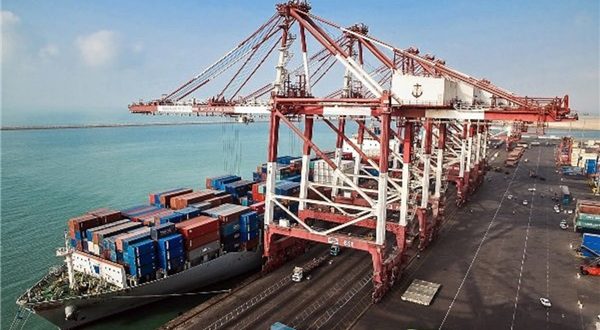Hassanzadeh said on Monday that the deal worth over $430 million would be signed and finalized on Tuesday. allowing construction for the terminal to begin by a private contractor at Shahid Rajaee Port. near Bandar Abbas. in Southern Iran.
“The final capacity of this terminal would be 50 million tons (a year).“ said Mohammad Ali Hassanzadeh. adding. that the project would be executed in three years and in three phases in an area covering 180 hectares.
The official said once finished. the terminal would bring about a real change to Iran’s mining and metals industry. adding that it would spur growth by increasing the volume of exports and by creating jobs.
He said the automated terminal would be linked to most of the mines across Iran through railways. adding that exporters would enjoy lower charges and improved shipment and loading standards through the facilities at the terminal.
Hassanzadeh said the development plan for the terminal includes a 2.400-hectare industrial town attached to the project which would enable the mining companies to turn raw materials into final products and make them ready to transportation.
The construction of the automated facilities at Shahid Rajaee Port. one of Iran’s largest container ports. comes at a time of increased activity in Iran’s mining and metals sector.
The country has been seeking to invest in the sector to offset the impacts of the American sanctions imposed on the oil industry.
Authorities said on Sunday that nearly $4 billion worth of new projects in mining and metals sector would be ready for use by late March 2020.
Earlier this month. Hassanzadeh said that Iran will give further momentum to privatization process with handing over authority over small ports to the private sector. in a bid to boost shipping activities to offset the impacts of US sanctions on trade. according to a senior maritime official.
He added that a plan to privatize small ports North and South of the country would be implemented in the upcoming months as the government seeks to spur more shipping activity.
He noted that transfer of ownership of small ports would begin once a current study phase to evaluate economic and infrastructure capacities of the ports is concluded.
“We have 48 small ports in Iran and handing them over to the private sector would begin in two months time.“ said Hassanzadeh. adding that most of the ports that are planned for privatization are located south of Iran on the Persian Gulf and on the Sea of Oman.
The PMOI is preparing tenders for the sale of the small ports to the private owners. said a report by the ILNA news agency. adding that potential winners of the bids should prove they have the sufficient economic and financial capacity to start operations at the ports.
According to the report. the PMOI defines small ports as those capable of accommodating ships carrying 500 to 1.000 tons of cargo and equipped with structures like breakwater. warehouses and offices to host administrative officials.
According to a government report in 2015. small ports had been involved in 7.5 percent of volume and over nine percent of the value of Iran’s total yearly trade.
The privatization of the ports come amid government efforts to activate more trade channels across the country as it seeks to minimize dependence on crude exports amid American sanctions that have affected exports.
Washington’s unilateral sanctions against Tehran began in November 2018. five months after US President Donald Trump withdrew from an international deal on Iran’s nuclear program.
Claiming that the bans were working properly. Trump tightened them in May. only to see that Iran was finding new solutions to recoup the losses.
Last month. Deputy Head of Iran Small Industries and Industrial Parks Organization (ISIPO) Ali Asqar Masaheb announced that Iran will undertake new measures to further strengthen its non-oil exports with a new bill to be tabled at the Iranian Parliament.
Iranian officials started planning for policies to counter the US possible sanctions a year before Donald Trump entered into office in early 2017. The policies are now proving effective as economic indexes are indicating inefficacy of the US pressures.
Earlier in July. Iranian Industry Minister Reza Rahmani said that despite US efforts to cripple Tehran’s economy. year-on-year comparison shows that the country’s domestic production has increased in the first quarter of the local calendar year (March 21-June 21).
 Iran Energy News Oil, Gas, Petrochemical and Energy Field Specialized Channel
Iran Energy News Oil, Gas, Petrochemical and Energy Field Specialized Channel




